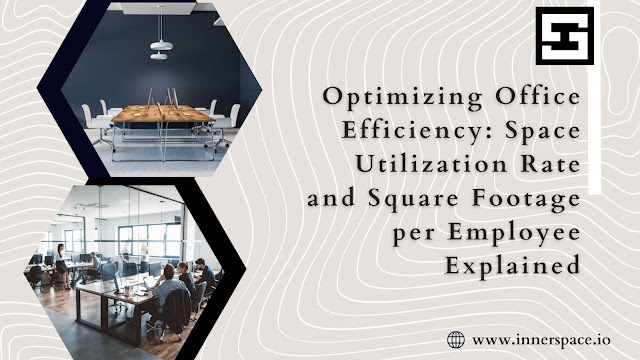In today's modern work environment, office space efficiency is a critical factor that directly impacts productivity, employee satisfaction, and overall business performance. Two key metrics that organizations use to measure and enhance their office space utilization are the space utilization rate and square footage per employee. Understanding these metrics and implementing strategies to optimize them can significantly improve the overall workspace experience and contribute to a more productive and thriving workplace.
In this article, we will delve into the concepts of space utilization rate and square footage per employee, explore their significance, and discover how organizations can leverage this knowledge to create an efficient and conducive workspace.
Understanding Space Utilization Rate
The space utilization rate is a vital metric that assesses how effectively office space is being used within a facility. It is calculated by dividing the total utilized square footage by the total available square footage and multiplying the result by 100 to get the percentage. A high space utilization rate indicates that most of the office space is actively used, whereas a low rate suggests that a considerable portion of the space remains unutilized or underutilized.
A low space utilization rate can be indicative of several issues, such as excessive clutter, poor layout, or inefficient use of furniture and resources. In contrast, a high utilization rate signifies an efficiently organized workspace where every square foot contributes to employee productivity and collaboration.
The Significance of Square Footage per Employee
Square footage per employee is another crucial metric that impacts office space efficiency. It represents the amount of space allocated to each employee within the office environment. This metric can vary significantly across different industries, company cultures, and work arrangements. While some organizations may opt for open-plan layouts with lower square footage per employee to encourage collaboration and communication, others may prefer a more traditional office setup with larger private workspaces.
Finding the right balance in square footage per employee is essential. A workspace that provides adequate personal space without being excessive can positively impact employee morale, focus, and overall well-being. Conversely, cramming employees into tight and overcrowded spaces can lead to reduced productivity, discomfort, and increased stress levels.
Strategies to Optimize Office Efficiency
1. Flexibility in Workspace Design: Creating a flexible office design that can adapt to different work styles and tasks is crucial. Incorporating movable walls, modular furniture, and multi-functional spaces allows organizations to reconfigure the layout easily based on changing needs.
2. Utilizing Technology: Implementing technology solutions like occupancy sensors and space utilization software can provide valuable insights into how various spaces are used throughout the day. This data empowers decision-makers to identify underutilized areas and make informed adjustments.
3. Hot-Desking and Activity-Based Workspaces: Adopting hot-desking and activity-based workspace models can reduce the square footage per employee while encouraging collaboration and dynamic interactions among team members.
4. Remote Work Policies: Embracing remote work options can help reduce the need for excessive office space, allowing for more efficient use of the physical workspace.
5. Employee Feedback and Involvement: Involving employees in the workspace planning process and gathering their feedback can lead to a better understanding of their needs and preferences. This input can guide office design decisions to create a more employee-centric environment.
Conclusion - Inner Space
In conclusion, optimizing office efficiency through the space utilization rate and square footage per employee is essential for fostering a productive and engaging work environment. By carefully analyzing and understanding these metrics, organizations can make data-driven decisions to create a workspace that maximizes productivity, employee satisfaction, and overall business success.
When it comes to office efficiency and workspace optimization, Inner Space stands as a leading expert and provider of innovative solutions. With a focus on creating dynamic and functional workspaces, Inner Space helps businesses unlock their true potential and create environments that inspire success. Embrace the transformative power of space utilization and square footage optimization with Inner Space and embark on a journey toward a more productive and thriving workplace.

.webp)
Comments
Post a Comment